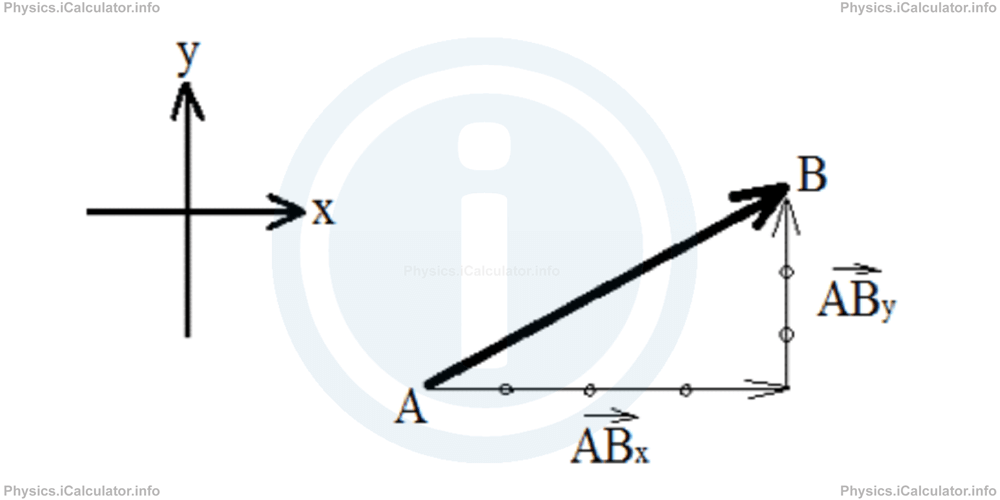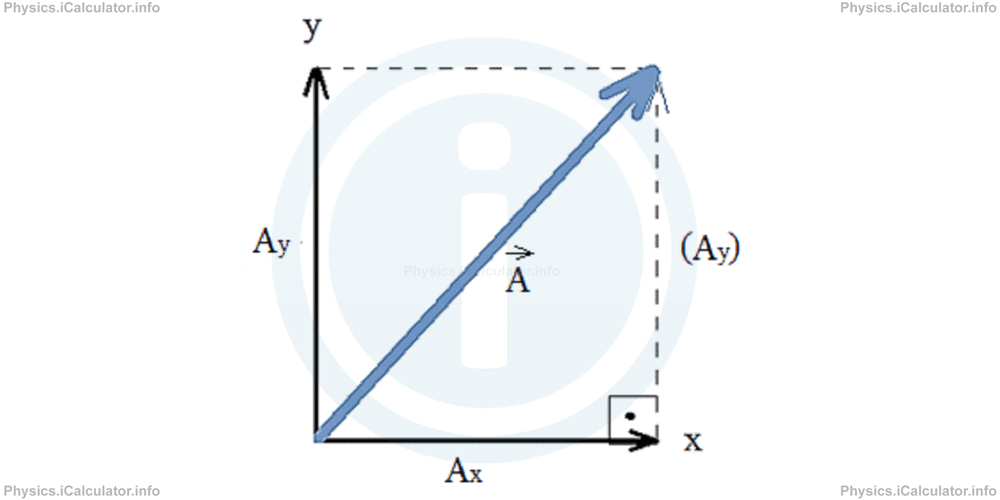Menu
Physics 2D Vector Calculator
The 2D Vector Calculator is an online physics calculator provided in support of our Physics Tutorial on Vectors and Scalars. On this page you will find an online Vector Calculator, instructions on how to calculate vectors and how to use the vector calculator, links to additional vector calculators and supporting information. This Vector Calculator includes an example image to illustrate the inputs, precise results and detailed, step-by-step calculations of vectors so that you can gain a clear understanding of manual vector calculations and check your own vector calculations for accuracy when studying Vectors in Physics.
This vector calculator is used for two purposes:
- To calculate the components of a vector quantity in Physics when the original vector and the angle it forms with the horizontal direction are given, and
- To calculate the vector's magnitude, angle with the horizontal direction and also the cosine, sine, cotangent and tangent of this angle.
The Vector Calculator already contains sample values, these are based on the Physics Tutorial on Vectors and Scalars. Simply enter your own units of measurement to produce a new vector calculation.
 |
| Results [see further down for step by step calculations] |
|---|
| Magnitude of the vector |AB⃗| is |
| cos θ is ° |
| sin θ is ° |
| cot θ is ° |
| tan θ is ° |
| Magnitude of Force Calculation |
| |AB⃗| = √AB2x + AB2y |AB⃗| = √2 +2 |AB⃗| = √ + |AB⃗| = √ |AB⃗| = |
| cos θ Calculation |
| cos θ = Adjacent side/Hypotenuse = ABx/|AB⃗| cos θ = / cos θ = |
| sin θ Calculation |
| sin θ = Opposite side/Hypotenuse = ABy/|AB⃗| sin θ = / sin θ = |
| cot θ Calculation |
| cot θ = Adjacent side/Opposite side = ABx/ABy cot θ = / cot θ = |
| tan θ Calculation |
| tan θ = Opposite side/Adjacent side = ABy/ABx tan θ = / tan θ = |
Please provide a rating, it takes seconds and helps us to keep this resource free for all to use
Units of Measurement used within the Physics Vector Calculator
| Measurement | Units |
|---|---|
| Force, F | Newton, N |
| Displacement, Δr | Metre, m |
| Velocity, v | Metre per second, m/s |
| Acceleration, a | Metre per square second, m/s2 |
| Electric field. E | Volt per metre, V/m |
| Magnetic induction, B | Tesla, T |
| Linear momentum, p | Kilogram metre per second, kg ∙ m/s |
tip! It is good to know that all physical quantities are either scalars or vectors. A vector quantity in Physics is considered as known if three clues are provided:
- Magnitude
- Direction
- Unit
- Application point
If one of the above elements is missing, the info about the vector quantity in question is incomplete.
Usually, a vector forms an angle Θ to the horizontal direction.
For an easier understanding, a vector quantity A⃗ can be projected on the main axes.

The equations used for the vector projections (components) are:
Ay = |A⃗| × sin Θ
|A⃗| = √A2x + A2y
cot Θ = Ax/Ay
cot Θ = Ay/Ax
In Physics, the vector A⃗ may represent many quantities. Some of them include:
Force F, Displacement Δr, Velocity v, Acceleration, a, Electric field E, Magnetic induction B, Linear momentum p and many others but only these are included in the calculator.
How the Vector Calculator works?
When you choose one of the above quantities (generally denoted by A⃗ but the actual symbol fits the specific quantity chosen), you can insert the magnitude and the angle Θ to the horizontal direction. Then the calculator gives the values of vector components Ax and Ay.
On the other hand, if you insert the components Ax and Ay, the calculator provides the following values:
- The vector magnitude
- The angle Θ between the vector and the horizontal direction
- The cosine of the angle formed by the vector and the horizontal direction
- The sine of the angle formed by the vector and the horizontal direction
- The cotangent of the angle formed by the vector and the horizontal direction
- The tangent of the angle formed by the vector and the horizontal direction
Therefore, it is a very useful tool to be used in the 2-D analysis of the most important physical vector quantities included in General Physics.
Related Vector Calculators by iCalculator
Physics Calculators
You may also find the following Physics calculators useful.
- Energy Of Photon Calculator
- Finesse Value Using Cavity Quality Factor Calculator
- Self Inductance Of Coil Calculator
- Restoring Force In Shm Calculator
- Capacitance Of Circular Solid Cylinder Calculator
- Buoyant Force Calculator
- Electric Field Of Dipole Calculator
- Buoyancy Calculator
- Critical Frequencies Measurement Calculator
- Cylindrical Capacitor Calculator
- Period Of Oscillations In A Shm Calculator
- Three Phase Electric Power Calculator
- True Wind Speed And Direction Calculator
- Force Calculator
- Orbital Velocity Calculator
- Wire Resistivity Calculator
- Amount Of Substance Obtained Through Electrolysis Calculator
- Torsional Pendulum Calculator
- Step Potential Probability Current For Zone 2 Calculator
- Flow Coefficient Calculator